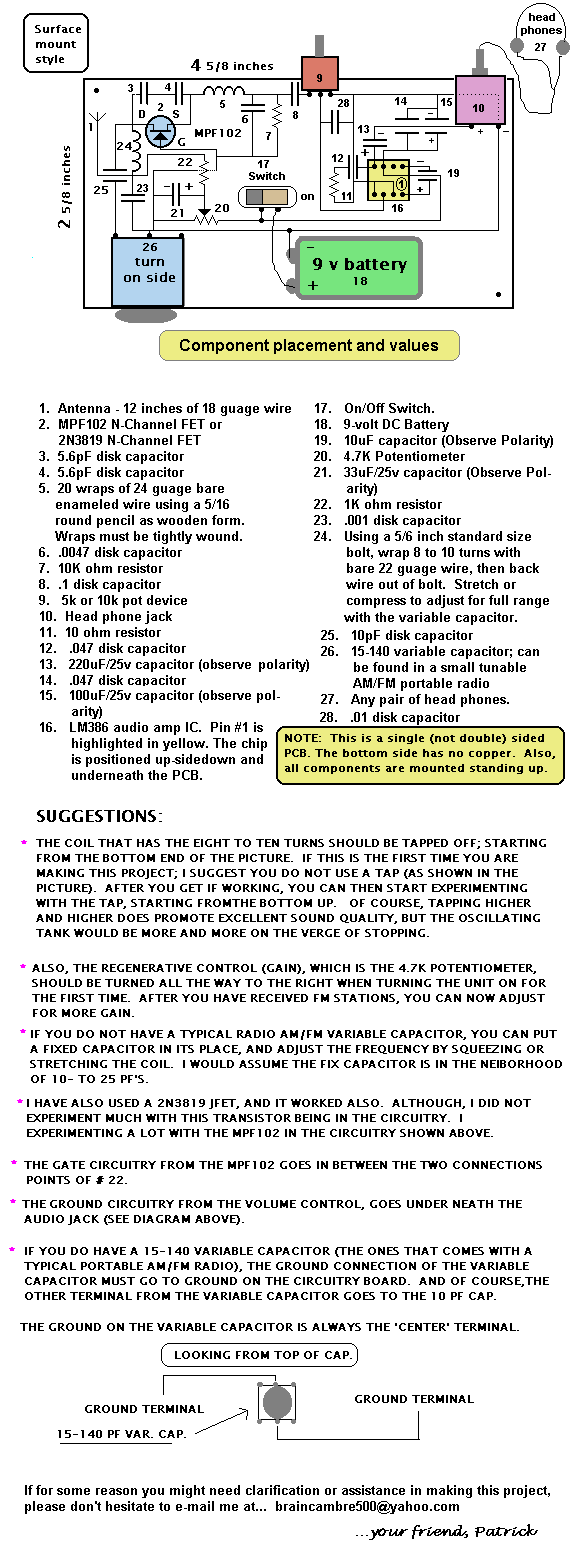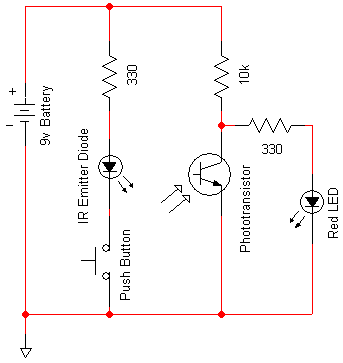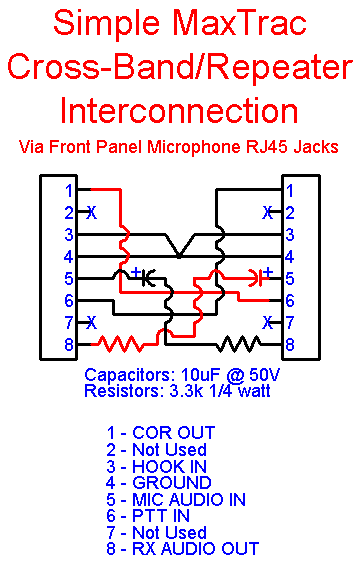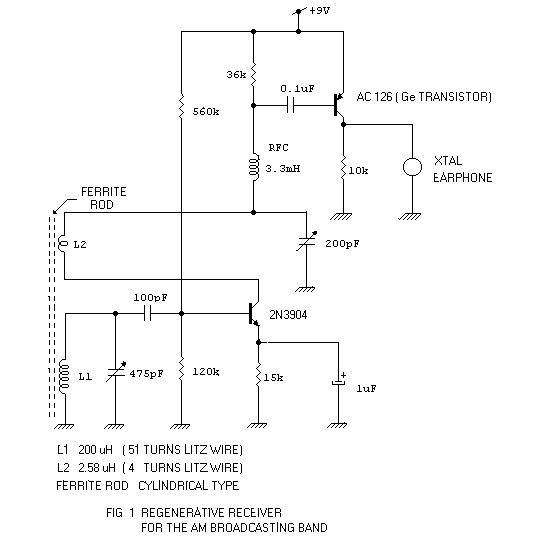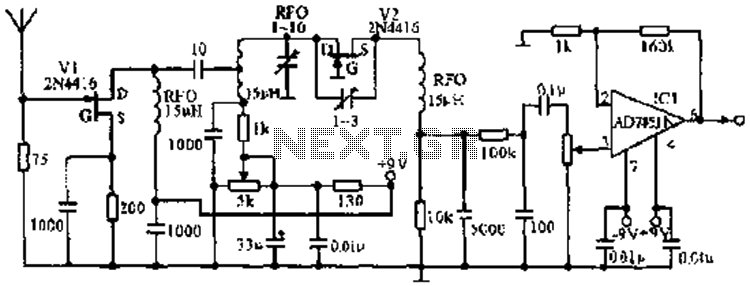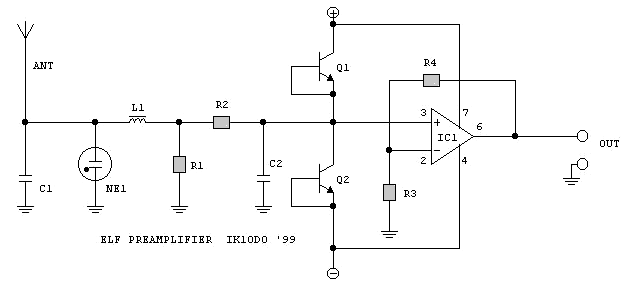
am radio receiver with mk484
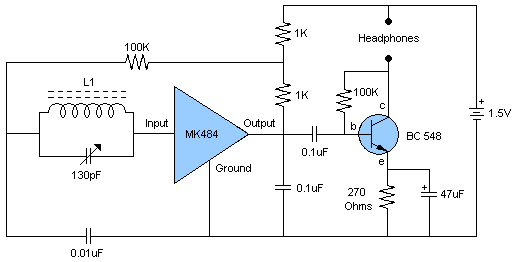
This schematic illustrates a high-quality AM radio receiver circuit centered around the MK484 AM radio integrated circuit (IC). The MK484 is known for its high sensitivity and superior performance, featuring only three leads and housed in a TO-92 package. It requires minimal external components, as essential functionalities such as RF amplification, automatic gain control (AGC), and detection are integrated within the IC. The circuit operates on a supply voltage of 1.5V DC and exhibits a low current consumption of merely 0.3mA, allowing a 1.5V battery to last for over a hundred hours. It is important not to exceed a voltage of 1.8V to the IC. The coil, designated as L1, consists of 55 turns of 0.315mm (30 SWG) enamelled copper wire wound around a ferrite rod measuring 10mm in diameter and 100mm in length.
The MK484 AM radio receiver circuit is designed for optimal performance in receiving amplitude-modulated (AM) signals. The integrated circuit's architecture allows it to efficiently amplify weak radio signals while minimizing noise, making it suitable for various applications, including hobbyist projects and educational demonstrations.
The circuit's power supply configuration is critical; it operates effectively at 1.5V, which is commonly provided by standard AA or AAA batteries. The low current consumption of 0.3mA is particularly advantageous for portable applications, ensuring prolonged battery life and reducing the frequency of battery replacements. This characteristic makes the MK484 ideal for battery-powered AM radio receivers.
The coil L1 plays a vital role in the circuit's performance. The specified 55 turns of 0.315mm enamelled copper wire wound on a ferrite rod enhance the inductance, which is essential for tuning into specific AM frequencies. The choice of wire gauge and the dimensions of the ferrite rod are crucial for achieving the desired inductive properties and resonance characteristics. Proper winding technique is necessary to avoid issues such as uneven inductance or parasitic capacitance, which could degrade the circuit's performance.
In summary, the MK484 AM radio receiver circuit is a compact and efficient design that showcases the capabilities of integrated circuits in radio applications. Its simplicity, combined with high sensitivity and low power consumption, makes it a valuable solution for AM radio reception.Here is a schematic of a good quality AM radio receiver circuit. The heart of the circuit is MK484 AM radio IC. It is a high sensitivity and high quality IC, it has only three leads and comes in TO92 package and require only few external parts because all the necessary circuitry like RF amplifier, AGC and detector are incorporated inside the IC. T he circuit can be operate only on 1. 5V DC and has a very low current consumption only 0. 3mA so the 1. 5 volt battery will last more then hundred hours. Do not give more then 1. 8 volt to the IC. The Coil L1 is equal to 55 turns of 0. 315mm (30 swg) enamelled copper wire wound on 10mm x 100mm long ferrite rod. 🔗 External reference
The MK484 AM radio receiver circuit is designed for optimal performance in receiving amplitude-modulated (AM) signals. The integrated circuit's architecture allows it to efficiently amplify weak radio signals while minimizing noise, making it suitable for various applications, including hobbyist projects and educational demonstrations.
The circuit's power supply configuration is critical; it operates effectively at 1.5V, which is commonly provided by standard AA or AAA batteries. The low current consumption of 0.3mA is particularly advantageous for portable applications, ensuring prolonged battery life and reducing the frequency of battery replacements. This characteristic makes the MK484 ideal for battery-powered AM radio receivers.
The coil L1 plays a vital role in the circuit's performance. The specified 55 turns of 0.315mm enamelled copper wire wound on a ferrite rod enhance the inductance, which is essential for tuning into specific AM frequencies. The choice of wire gauge and the dimensions of the ferrite rod are crucial for achieving the desired inductive properties and resonance characteristics. Proper winding technique is necessary to avoid issues such as uneven inductance or parasitic capacitance, which could degrade the circuit's performance.
In summary, the MK484 AM radio receiver circuit is a compact and efficient design that showcases the capabilities of integrated circuits in radio applications. Its simplicity, combined with high sensitivity and low power consumption, makes it a valuable solution for AM radio reception.Here is a schematic of a good quality AM radio receiver circuit. The heart of the circuit is MK484 AM radio IC. It is a high sensitivity and high quality IC, it has only three leads and comes in TO92 package and require only few external parts because all the necessary circuitry like RF amplifier, AGC and detector are incorporated inside the IC. T he circuit can be operate only on 1. 5V DC and has a very low current consumption only 0. 3mA so the 1. 5 volt battery will last more then hundred hours. Do not give more then 1. 8 volt to the IC. The Coil L1 is equal to 55 turns of 0. 315mm (30 swg) enamelled copper wire wound on 10mm x 100mm long ferrite rod. 🔗 External reference
